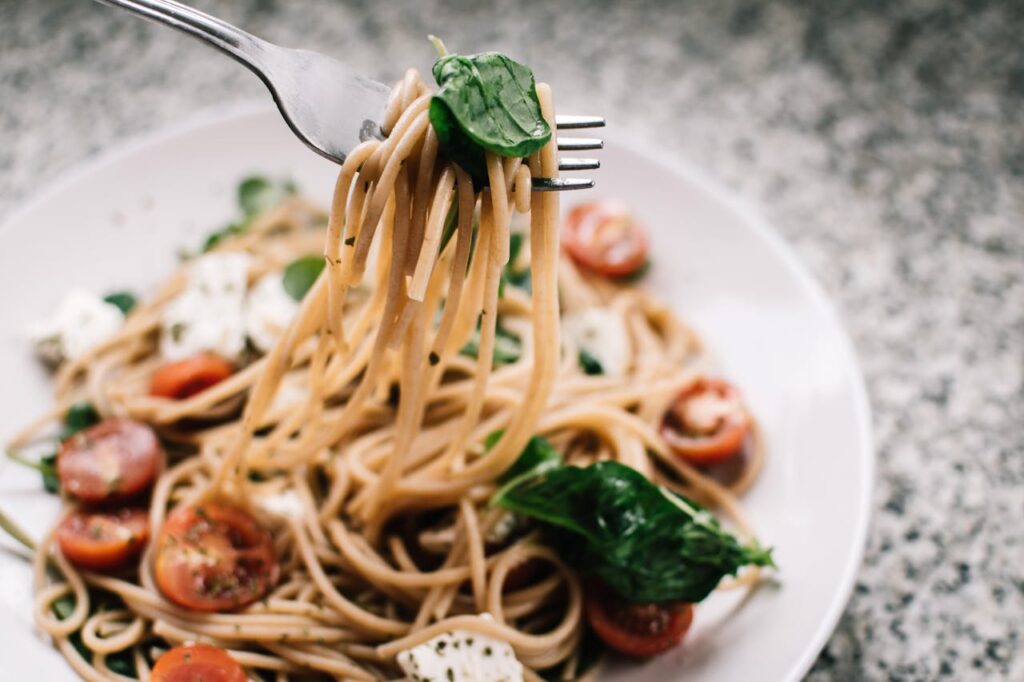
Explore & Play
Discover interesting topics and solve the accompanying crossword puzzle.
Dish Crossword | Evolution of Global Cuisine
Try the Dish crossword and explore the evolution of global cuisine from street food to fine dining in this insightful article.
Table of Contents
Discover the fascinating journey of global cuisine, from street food to fine dining, as you explore its rich history and evolution. To make your experience even more engaging, we invite you to start with the Dish crossword—an exciting challenge that will enhance your understanding of the topic. If you’re unfamiliar with the subject, feel free to dive into the article first for valuable insights, then return to the crossword to test your newfound knowledge.
Dish Crossword
You can either fill in the crossword puzzle directly on this page or click the button in the bottom right corner to print it for free.

The Evolution of Global Cuisine: From Street Food to Fine Dining
Cuisine, like culture, has evolved and adapted over centuries, with street food to fine dining showcasing the rich diversity of flavors and techniques from around the world. The transformation of food, from its simplest origins to its most refined presentations, reflects not only technological advancements but also the complex interplay of geography, climate, and culture.
In this article, we explore the journey of global cuisine, from the accessible and flavorful world of street food to the sophisticated and artistic creations found in fine dining establishments. Along the way, we’ll touch upon several dishes and culinary elements, from tacos and falafel to sushi and risotto, highlighting the evolution of these favorites. We’ll also explore a crossword puzzle featuring culinary words like “plate,” “bowl,” “sushi,” “falafel,” and more, allowing you to immerse yourself further in this culinary exploration.
I. The Roots of Street Food: Accessibility and Flavor
A. The Global Appeal of Street Food
Street food, the humble and accessible culinary experience, has long been the beating heart of many cultures around the world. Whether it’s a taco on a bustling corner in Mexico City, a steaming bowl of pho in Hanoi, or a delicious falafel wrap in Cairo, street food has always been about quick, flavorful meals that are both affordable and satisfying. The appeal of street food lies not only in its simplicity but also in its connection to culture. These dishes are often rooted in tradition, passed down from generation to generation, and adapted over time. For example, a classic falafel, deep-fried to a crispy perfection, combines chickpeas with a blend of spices and herbs, creating a flavorful, vegetarian dish that has become a global favorite. Tacos, with their soft corn tortillas, grilled meats, and fresh toppings, are another prime example of how street food can become an international sensation. Originally a Mexican specialty, tacos have spread across the globe, with each country adding its own twist to the recipe.B. Simplicity and Fresh Ingredients
At the core of street food is its simplicity. Street food dishes often feature a short list of ingredients, allowing the flavors to shine through. These meals are typically prepared fresh on the spot, emphasizing the importance of quality ingredients. Take, for example, ceviche—a dish made from raw fish marinated in citrus juice, with fresh vegetables and herbs added for flavor. This simple yet flavorful dish is a staple of coastal regions in Latin America, particularly in Peru, where it is often served with crispy corn or sweet potatoes. Similarly, burritos, originating from Mexico, showcase the use of fresh ingredients, such as beans, rice, avocado, and grilled meats wrapped in a soft tortilla. It’s a meal that is not only filling but also customizable, allowing street food vendors to cater to a variety of tastes and preferences.C. From Cart to Plate: Street Food’s Transformation
In recent years, street food has undergone a transformation, making its way from food carts and market stalls into upscale restaurants and trendy food trucks. This shift reflects the growing appreciation for the authenticity and bold flavors found in street food. In many cities, fine dining establishments now feature dishes like sushi, pizza, and dim sum, once considered street food staples, as part of their menus. Sushi, for instance, originally a street food in Japan, has found its place in the world of fine dining. The delicate slices of raw fish, perfectly seasoned rice, and simple yet sophisticated presentation now grace the tables of high-end restaurants worldwide. Similarly, pizza, which began as a humble dish from Naples, has evolved into a global phenomenon, with creative toppings and artisanal techniques elevating it to an art form.II. From Home Kitchens to Restaurants: The Rise of Casual Dining
A. The Advent of Casual Dining and Comfort Food
As societies evolved, so did their dining habits, moving from simple home-cooked meals to vibrant restaurant scenes that catered to both locals and tourists. One of the most significant shifts in dining culture was the rise of casual dining, which brought comfort foods like meatloaf, pancakes, and casseroles to the forefront. Meatloaf, often associated with home cooking, became a staple in casual dining restaurants in the U.S., with variations on the classic dish appearing on menus across the country. Pancakes, traditionally a breakfast food, found their way into all-day menus, paired with syrup, fruits, or even savory fillings. These comfort foods provided a sense of warmth and nostalgia, offering diners a taste of home while enjoying a social dining experience.B. International Influence on Casual Menus
The expansion of casual dining also brought with it the integration of international flavors. Dishes like quiche, a French specialty, and risotto, an Italian favorite, began appearing on menus in casual dining restaurants, adding sophistication and variety to everyday meals. These dishes, once considered elegant and reserved for fine dining, became accessible to a broader audience, introducing new flavors and techniques to diners around the world. Risotto, with its creamy texture and endless possibilities for customization, has become a beloved dish across cultures. Similarly, quiche, with its savory filling encased in a flaky crust, has evolved from a traditional French meal to a popular brunch offering.C. The Importance of Pairing Dishes with Drinks
In the world of casual dining, the concept of pairing food with drinks became increasingly popular. Restaurants began offering wine, beer, and cocktails specifically chosen to complement the dishes they served. Salad, a staple of casual dining, could be paired with light white wines or sparkling waters, while a rich and hearty stew might be better suited to a bold red wine. The role of pairing dishes with drinks enhanced the dining experience, turning meals into a multisensory event. Soups, with their warm and comforting nature, could be complemented by light, crisp beers, while more complex dishes like risotto and quiche might be paired with a glass of fine wine.III. Fine Dining: The Art of Culinary Perfection
A. The Role of Technique in Fine Dining
Fine dining represents the pinnacle of culinary skill, where ingredients, techniques, and presentation come together to create a memorable dining experience. One of the most significant differences between casual dining and fine dining is the level of technique required. In fine dining, chefs are masters of their craft, employing sophisticated techniques such as stir-frying, roasting, and poaching to create dishes that are both visually stunning and delicious. Sushi, once a simple street food, now requires years of training to perfect the delicate art of slicing raw fish and assembling it with seasoned rice. Paella, a traditional Spanish dish, relies on the precise timing and technique of cooking rice, seafood, and meats together in one pan. Tempura, another fine dining favorite, involves carefully battering and deep-frying ingredients to achieve a light, crispy texture.B. Presentation: The Visual Aspect of Fine Dining
In fine dining, presentation is everything. The way a dish is plated can elevate the entire dining experience. From the intricate art of arranging sashimi to the careful plating of fondue, presentation plays a crucial role in fine dining. Dishes like these not only appeal to the palate but also to the eyes, with chefs using garnishes, colors, and textures to create visually appealing works of art. Sashimi, for example, is more than just raw fish; it’s a presentation of colors, textures, and shapes, carefully arranged on a plate to create a visually striking dish. Similarly, fondue, with its melted cheese or chocolate, is presented as a communal dish, allowing diners to dip bread, fruits, or vegetables into the warm, velvety sauce.C. Michelin-Star Cuisine: The Best of the Best
Michelin-star chefs represent the highest level of culinary excellence, and their menus often feature a mix of traditional and innovative dishes. At these establishments, every element of a dish is carefully crafted and refined. Sashimi, quiche, and tiramisu—classic dishes from Japan, France, and Italy—are reimagined with modern techniques and extraordinary presentation, showcasing the chef’s creativity and skill. Michelin-star chefs push the boundaries of flavor and technique, creating dishes that are both surprising and satisfying. The humble quiche, for instance, can be elevated with a delicate crust and a filling made from the finest local ingredients, while tiramisu can be transformed into a visually stunning dessert that highlights its rich flavors.IV. Fusion Cuisine: The Intersection of Global Flavors
A. Global Dishes with a Modern Twist
In recent years, fusion cuisine has emerged as a way to combine diverse culinary traditions, blending flavors and techniques from different parts of the world. This trend has led to the creation of unique and exciting dishes, like sushi tacos or pizza with non-traditional toppings. Sushi tacos, for instance, combine the delicate raw fish and rice of sushi with the crunchy, flavorful tortilla of a taco, creating a perfect fusion of Japanese and Mexican cuisine. Similarly, pizza has evolved beyond its traditional roots, with toppings like truffle oil, arugula, and even exotic fruits, making it a global dish that adapts to various culinary influences.B. The Influence of Street Food on Fine Dining
The influence of street food on fine dining cannot be overstated. In many restaurants, street food-inspired dishes are reimagined and elevated to new heights. Burritos, once a simple street food, are now featured in gourmet restaurants, where chefs experiment with fillings like foie gras and truffle oil. Dim sum, another beloved street food, has found its place in fine dining, with chefs offering creative takes on this traditional Chinese dish.C. The Role of Spices in Fusion Dishes
Spices play a crucial role in the development of fusion dishes, bringing depth and complexity to flavors. Spices such as saffron, cumin, and curry powder are now commonly used in fusion dishes that blend Eastern and Western flavors. A dish like paella, traditionally made with saffron, might feature cumin to add an additional layer of flavor, while a falafel might be spiced with curry powder to create a more complex taste profile.V. The Future of Global Cuisine: Sustainability and Innovation
A. Embracing Local and Sustainable Ingredients
As we look to the future, global cuisine is embracing sustainability, with an emphasis on using locally sourced, seasonal ingredients. Dishes like stews and risottos, which rely on fresh vegetables and meats, are becoming more popular as chefs focus on reducing food waste and supporting local farmers.B. Plant-Based Revolution: A Focus on Vegetables and Grains
The rise of plant-based diets has also influenced global cuisine, with dishes like falafel and sushi evolving to include plant-based proteins and grains. As more people turn to vegetarian and vegan options, chefs are finding innovative ways to incorporate plant-based ingredients into traditional dishes, making them accessible and appealing to a wider audience.C. Innovation in Cooking Techniques and Technology
Technology is playing an increasingly important role in the kitchen, with new gadgets and techniques allowing chefs to experiment with texture, flavor, and presentation. Omelettes, for example, are being cooked using sous-vide techniques to achieve the perfect texture, while new equipment allows chefs to create more precise, complex dishes.VI. The Ongoing Evolution of Global Cuisine
From the bustling streets to the elegant dining rooms, the evolution of global cuisine continues to unfold, offering new flavors, techniques, and experiences with each passing year. As food continues to evolve, so does our understanding of it, influenced by culture, technology, and sustainability. Whether you’re enjoying a simple taco on the streets of Mexico City or indulging in a Michelin-starred meal, the world of food offers an endless variety of tastes and experiences. So why not dive deeper into this culinary adventure and test your knowledge of global dishes with our crossword puzzle? Ready to test your culinary knowledge? Play the crossword puzzle now and see how many dishes you can identify!Share to...
Thank you for reading 👋
I hope you enjoy the content.
I hope you enjoy the content.
Want to receive our daily crossword puzzle or article? Subscribe!
You may also be interested in
Share to…
Want to receive our daily crossword puzzle?
-
Jigsaw Puzzles
Blue-Eyed Kitten Puzzle Delight 250 | 300 | 500 Pieces
kr 348,00 – kr 439,00Price range: kr 348,00 through kr 439,00 Select options This product has multiple variants. The options may be chosen on the product page -
Jigsaw Puzzles
Majestic Horse Watercolor Jigsaw Puzzle 250 | 300 | 500 Pieces
kr 348,00 – kr 439,00Price range: kr 348,00 through kr 439,00 Select options This product has multiple variants. The options may be chosen on the product page -
Jigsaw Puzzles
Trolltunga Abstract Jigsaw Puzzle 250 | 300 | 500 Pieces
kr 348,00 – kr 439,00Price range: kr 348,00 through kr 439,00 Select options This product has multiple variants. The options may be chosen on the product page

















